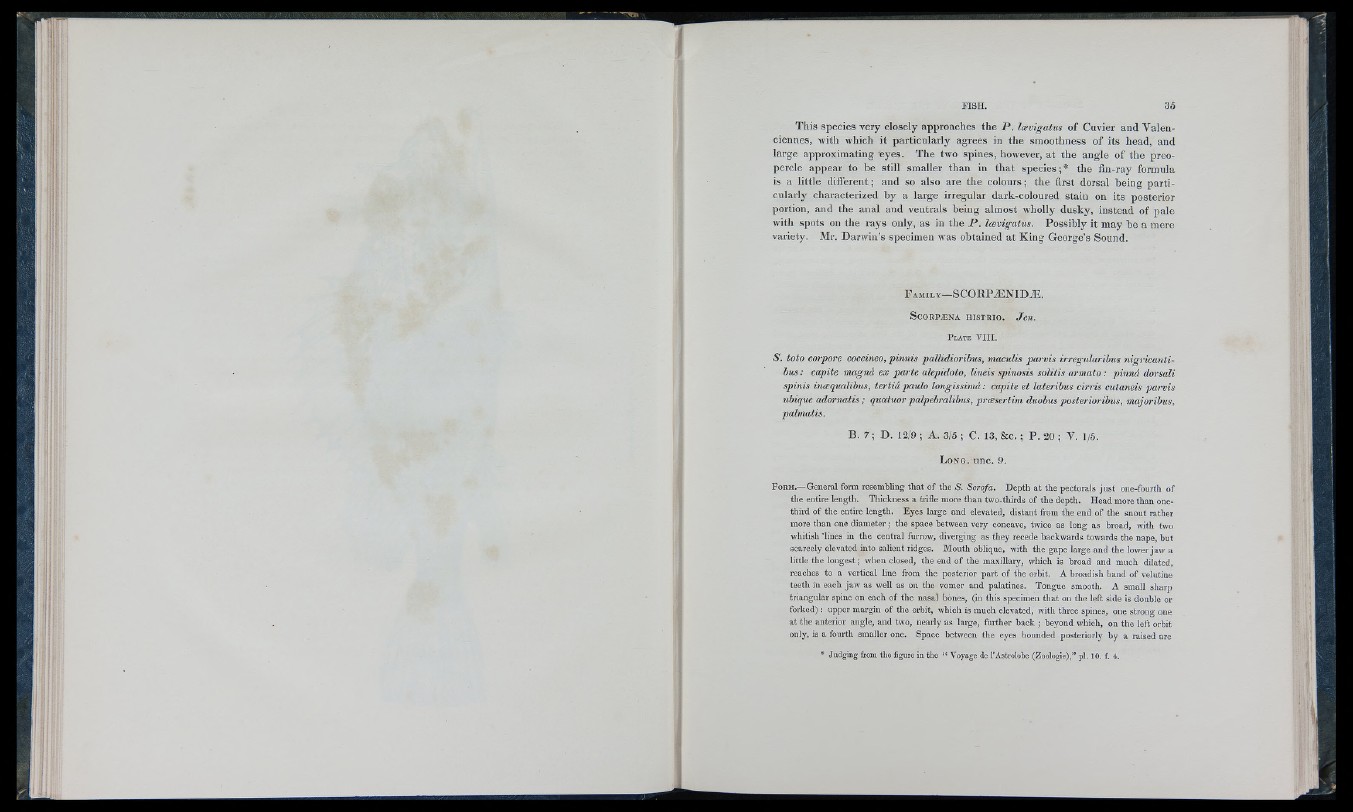
FISH . 3 5
This species very closely approaches the P . Uvigatus of Cuvier and Valenciennes,
with which it particularly agrees in the smoothness of its head, and
large approximating eyes. The two spines, however, at the angle of the preopercle
appear to be still smaller than in that species;* the fin-ray formula
is a little different; and so also are the colours; the first dorsal being p articularly
characterized by a large irregular dark-coloured stain on its posterior
portion, and the anal and ventrals being almost wholly dusky, instead of pale
with spots on the rays only, as in the P . IcBvigatus. Possibly it may be a mere
variety. Mr. Darwin’s specimen was obtained at King George’s Sound.
F a m i l y — S CO R PÆ N IDÆ .
S c o r p æ n a h i s t r io . Jen.
P l a t e V III.
S. toto corpore coccíneo, pinnis pallidioribus, maculis parvis irregularibus nigricantihus:
capite magná ex parte alepidoto, lineis spinosis solitis armato: pinna dorsali
spinis inoequalibus, iertiâ paulo longissimá: capite et lateribus cirris cutaneis parvis
ubique adornatis ; quatuor palpehralibus, præsertim duobus posterioribus, majoribus,
palmatis.
B. 7; D. 12/9 ; A. 3/5 ; C. 13, &c. ; P . 20 ; V. 1/5.
L o n g . u n e . 9.
F orm.— General form resembling that of the S'. Scrofa. D epth a t the pectorals ju st one-fourth of
the entire length. Thickness a trifle more than two-thirds of the depth. Head more than one-
third of the entire length. Eyes large and elevated, distant from the end of the snout rather
more than one d iam eter; the space between very concave, twice as long as broad, with two
whitish Tines in the central furrow, diveiging as they recede backwards towards the nape, but
scarcely elevated into salient ridges. Mouth oblique, with the gape large and the lower jaw a
little the lon gest; when closed, the end of the maxillary, which is broad and much dilated,
reaches to a vertical line from the posterior part of the orbit. A broadish band of velutine
teeth in each jaw as well as on the vomer and palatines. Tongue smooth. A small sharp
triangular spine on each of the nasal bones, (in this specimen that on the left side is double or
fork ed): upper margin of the orbit, which is much elevated, with three spines, one strong one
at the anterior angle, and two, nearly as large, further back ; beyond which, on the left orbit
only, is a fourth sm aller one. Space between the eyes bounded posteriorly by a raised arc
• Judging from the figure in the “ Voyage do I'Astrolobe (Zoologie),” pi. 10. f. 4.